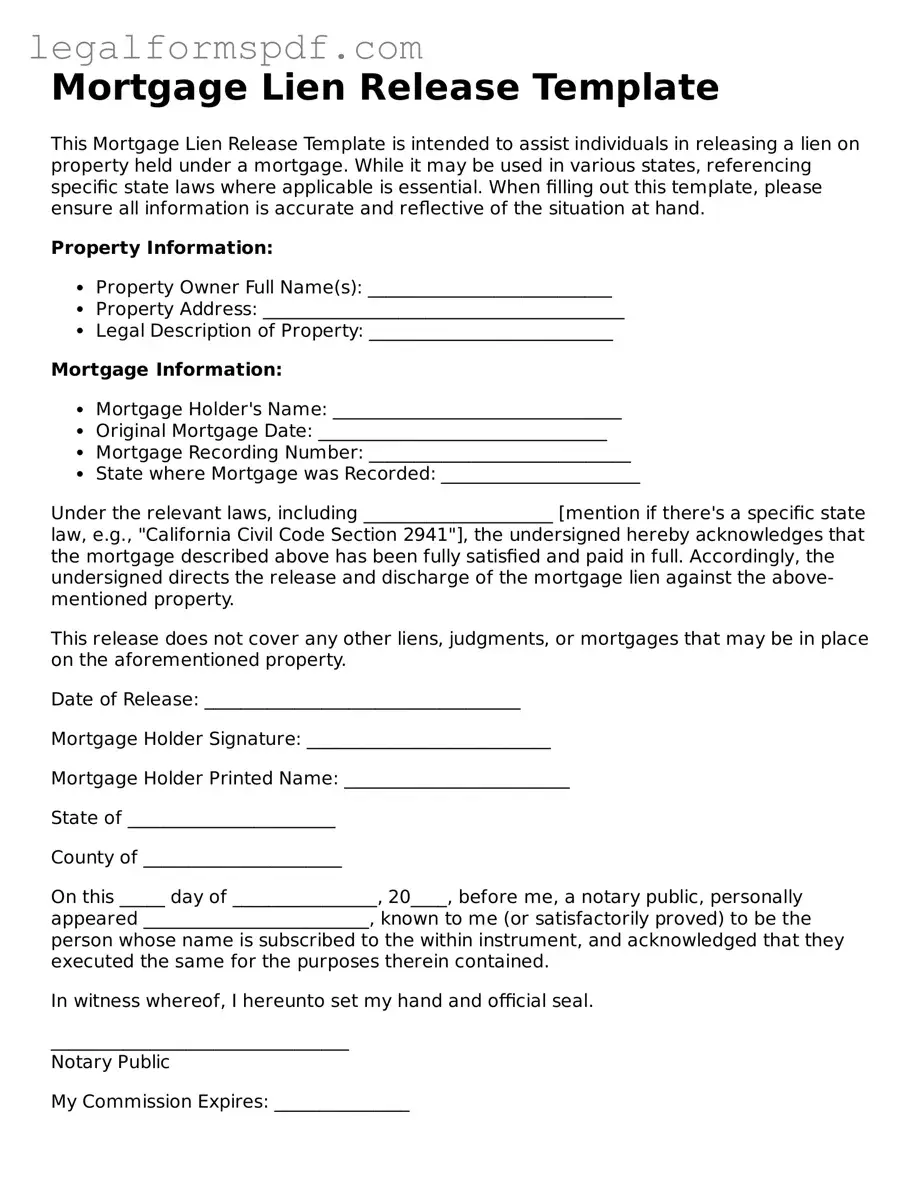What is a Mortgage Lien Release form?
A Mortgage Lien Release form is a legal document used to cancel a lien on a property. This lien typically comes from a mortgage, indicating that a lender has a financial interest in the property. Upon full repayment of the mortgage, the lender releases this interest by issuing the Mortgage Lien Release form, clearing the title and officially making the homeowner the sole owner of the property.
When do I need a Mortgage Lien Release form?
You need a Mortgage Lien Release form when you have fully repaid your mortgage loan. It's essential to ensure that this document is filed to remove the lien from your property's title, officially showing that you own the property free and clear of any mortgage obligations.
How do I obtain a Mortgage Lien Release form?
Typically, the lender is responsible for preparing and filing the Mortgage Lien Release form once the final mortgage payment is processed. However, it's advisable to follow up with your lender to ensure this document has been completed and filed. If necessary, you can also contact your local county recorder's office or consult with a legal professional to obtain this form.
What happens if I don't file a Mortgage Lien Release form?
If a Mortgage Lien Release form is not filed, the lien will remain on your property's title, indicating that the lender still has a financial claim on the property. This can cause complications when you decide to sell or refinance your property, as clear title is required for these transactions.
Is there a deadline for filing a Mortgage Lien Release form?
There is no set federal deadline for filing a Mortgage Lien Release form, but it's generally in your best interest to do so as soon as possible after your mortgage is paid off. Some states may have specific requirements or timelines, so it's advisable to check local laws and regulations.
Can I file the Mortgage Lien Release form myself?
Yes, in many cases, homeowners can file the Mortgage Lien Release form themselves. This process typically involves obtaining the form from the lender or local county office, completing it, and then submitting it to the county recorder's office. Despite this, it's often helpful to seek guidance from a professional to ensure accuracy and compliance with local laws.
What information is needed to fill out a Mortgage Lien Release form?
Completing a Mortgage Lien Release form usually requires information such as the names of the borrower and lender, the address of the mortgaged property, the date the mortgage was paid off, and details about the original mortgage agreement, including the recording information. It's crucial to provide accurate information to ensure the successful release of the lien.
What should I do after filing a Mortgage Lien Release form?
After filing a Mortgage Lien Release form, it's important to keep a copy for your records and monitor your property's title to ensure the lien has been removed. This can often be done by checking with the local county recorder's office or a title company. Ensuring the lien is released helps maintain clear ownership and avoids future legal complications.
